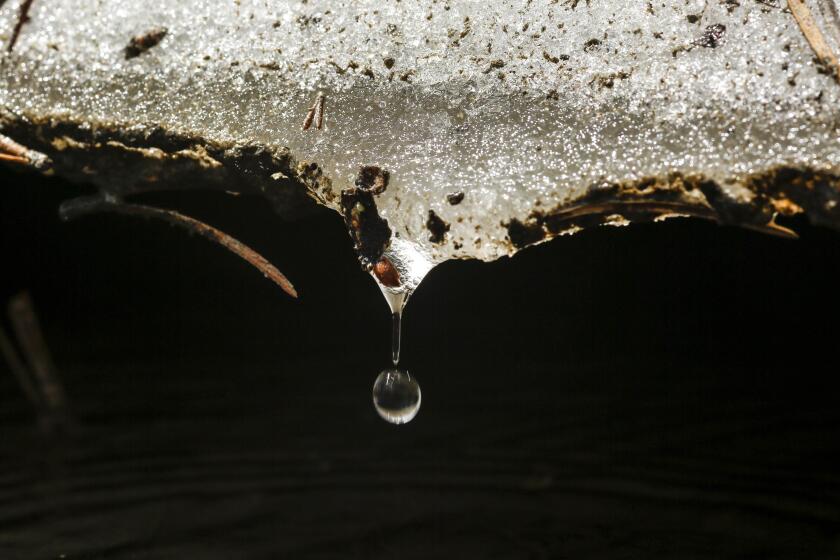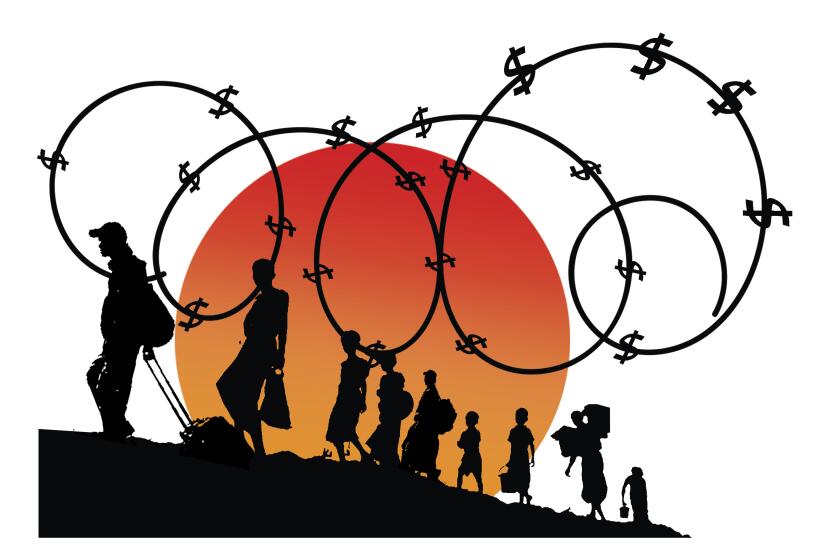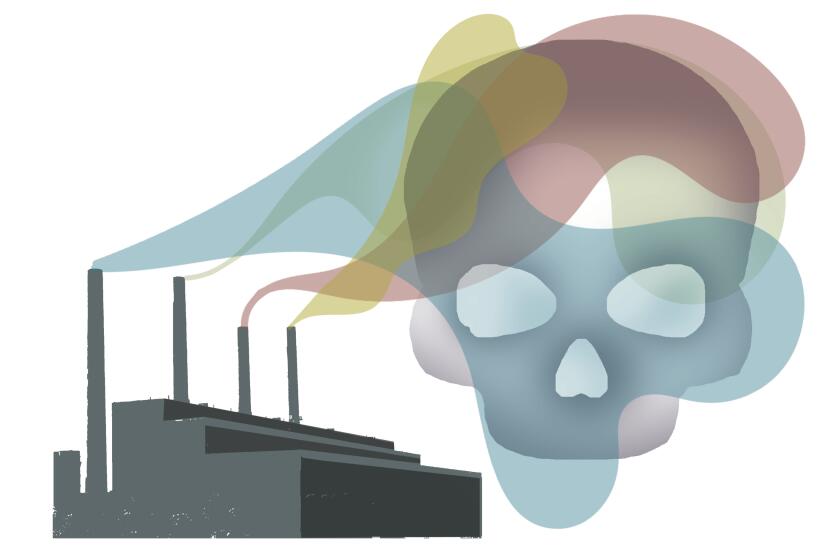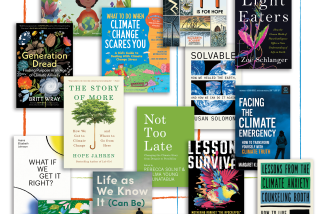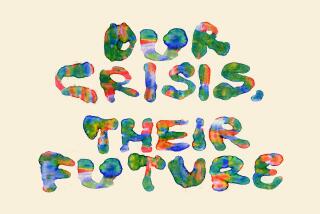Editorial: Climate change is already here. 2020 could be your last chance to stop an apocalypse
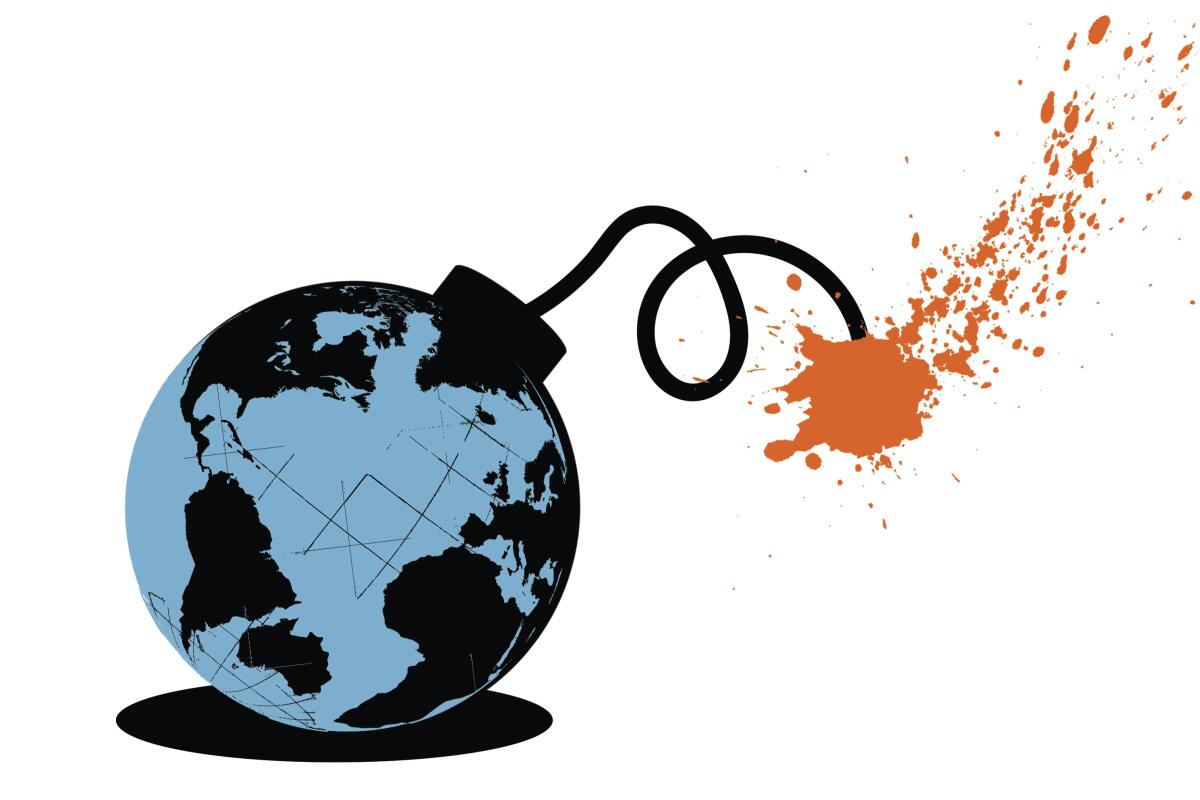
The world is drifting steadily toward a climate catastrophe. For many of us, thatâs been clear for a few years or maybe a decade or even a few decades.
But others have known that a reckoning was coming for much longer. A Swedish scientist first calculated in 1896 that adding carbon dioxide to the atmosphere could lead to warmer global temperatures. By the 1930s, scientists were measuring the increase, and in the late 1960s, they had documented the impact of melting ice in Antarctica. By 1977, Exxon-Mobil had recognized its own role in the warming of the ocean, the polar ice melt and the rising sea level.
For obvious reasons, Exxon-Mobil launched a massive public disinformation campaign to muddy the science and downplay the danger. But in retrospect, it neednât have bothered. Because even after the facts became incontestably clear, the world did shockingly little to protect itself. In the first 17 years after the Kyoto protocol committed its signatories to reducing greenhouse gas emissions, global emissions continued to rise. Decades of studied ignorance, political cowardice, cynical denialism and irresponsible dithering have allowed the problem to grow deeper and immeasurably harder to solve.
A three-part series on climate change
Part 2: Wealthy countries are responsible for climate change, but itâs the poor who will suffer most
Part 3: Surviving climate change means an end to burning fossil fuels. Prepare yourself for sacrifices
But today, we are at an important turning point. The changing climate is no longer an abstract threat lurking in our distant future â it is upon us. We feel it. We see it. In our longer and deeper droughts and our more brutal hurricanes and raging, hyper-destructive wildfires. And with that comes a new urgency, and a new opportunity, to act.
Climate change is now simply impossible to ignore. The temperature reached a record-breaking 90 degrees in Anchorage this summer and an unprecedented 108 degrees in Paris. We can watch glaciers melting and collapsing on the web; ice losses in Antarctica have tripled since 2012 so that sea levels are rising faster today than at any time in the last quarter-century. Human migration patterns are already changing in Africa and Latin America as extreme weather events disrupt crop patterns, harm harvests and force farmers off their land, sending climate refugees to Europe and the United States.
Itâs often difficult to attribute specific events to climate change but, clearly, strange things are happening. In India, entire cities are running out of water, thanks, scientists say, to a dangerous combination of mismanagement and climate change. In Syria, the civil war that has killed hundreds of thousands of people and displaced more than 11 million is believed by many scientists to have been sparked at least in part by climate-related drought and warming. Closer to home, two invasive, non-native mosquito species that have the potential to transmit viruses, including dengue, Zika and yellow fever have recently been found in several California cities.
According to NASA, 18 of the 19 warmest years ever recorded have occurred since 2000. The last five years have been the hottest since record-keeping began in 1880. July set an all-time record.
Hereâs another reason weâre at a turning point (at least in the United States): An election is coming.
For three years, Americans have been living under the willfully blind, anti-scientific, business-coddling rule of President Trump, who has stubbornly chosen climate denial over rationality. We now have an opportunity to resoundingly reject his policies by voting him out of office, along with congressional Republicans who enable him. There are plenty of reasons to fight for Trumpâs defeat in November 2020, but his deeply irresponsible climate policies â including moving to pull the U.S. out of the Paris climate agreement, roll back Barack Obamaâs emission limits on coal-fired plants, rescind rules governing methane emissions and relax national fuel emission standards â are among the strongest.
It is late â terribly late â for action, but with some luck, perhaps it is not too late to avoid some of the worst impacts of climate change. In nations across the world, people finally recognize climate change as a top or very serious threat, according to the Pew Research Center. In the U.S., even Republican voters â and especially younger ones â are waking up to the realities and dangers of a warming planet.
Fewer and fewer people today doubt the overwhelming scientific evidence: By burning fossil fuels for energy, humans have added so much carbon (and other greenhouse gases) to the atmosphere that we are changing nature itself, imperiling the delicate interdependence among species and putting our own survival at risk. Scientists say with certainty that we must radically transform how we make and use energy within a decade if we are to have any chance of mitigating the damage.
There are plenty of reasons to fight for Trumpâs defeat in November 2020, but his deeply irresponsible climate policies ... are among the strongest.
But figuring out what must be done at this late stage is complicated. There are a wide range of emissions sources and many ways to approach them, ranging from the microsteps that can be taken by individuals â Do you have to take that car trip? That airline flight? â to the much more important macro-policies that must be adopted by nations.
Globally, 25% of greenhouse gas emissions today comes from burning fossil fuels to create heat and electricity, mostly for residential and commercial buildings; another 23% is the result of burning fuel for industrial uses. And 14% comes from transportation.
All that burning of carbon fuels needs to end; yet unless policies and politics change dramatically, it wonât end. Even in this time of heightened clarity, two-thirds of new passenger vehicles bought in the U.S. last year were gas-guzzling pickup trucks and SUVs. Those SUVs will be on the road an average of eight years, and the pickups for more than 13 years, as the time to address the climate problem slips away. Blame for this falls not just on consumers, but also on the manufacturers and the government, which has done too little to disincentivize the driving of gas-powered cars.
In the years since Kyoto, the world has undertaken significant efforts to ratchet down energy consumption, curtail coal burning (the dirtiest of the fossil fuels) and turn to renewable energy sources, yet overall emissions have increased. Today there are 7.7 billion people on the planet â twice as many as 50 years ago â and more people means more demand for power, especially in fast-growing countries such as India and China. Last year saw a global acceleration of emissions, as total carbon levels in the atmosphere reached 414.8 parts per million in May, the highest recorded in 3 million years. The richer human society becomes, it seems, the more we poison the world.
The Los Angeles Times editorial board has written about climate change for years. Hereâs why we thought this was the right moment for a bigger, broader series of editorials on the subject.
At this point, the mission is no longer to avert or reverse climate change, but to mitigate its worst effects (by continuing to reduce emissions and slow warming) and to adapt to others. Adaptation might mean retreating from coastal developments as the seas rise or elevating roads and installing flooding pumps (as the city of Miami is already doing), or creating carbon sinks to remove carbon dioxide from the atmosphere, all while continuing to try to curtail further emissions.
None of this is cheap or easy, but neither is the alternative. 2017 ranks as the costliest year for severe weather events and climate disasters worldwide; in the U.S. there was more than $300 billion in cumulative damage, according to the National Oceanic and Atmospheric Administration. Obviously, the cost of dealing with inundated coastal areas â home to as many as 650 million people, or 8% of the worldâs population â will be extraordinarily high. And thatâs only one of the dangers on the horizon. We can expect people to be displaced by drought, river flooding, hurricanes and typhoons. Parts of the world can expect more food shortages, which some experts believe will lead in turn to political instability, civil unrest and mass migration. The U.S. military rightly refers to climate change as a âthreat multiplier.â
Fighting the rise in temperature and sea levels will be tough. Our democracy doesnât encourage politicians to take bold stances; our economic system doesnât encourage companies to sacrifice profits for the common good. And we humans are understandably disinclined to live differently or to make sacrifices. But we must stop dawdling and forge ahead if we are to protect ourselves and our planet.
This is Part 1 of a three-part series on climate change.
More to Read
A cure for the common opinion
Get thought-provoking perspectives with our weekly newsletter.
You may occasionally receive promotional content from the Los Angeles Times.
